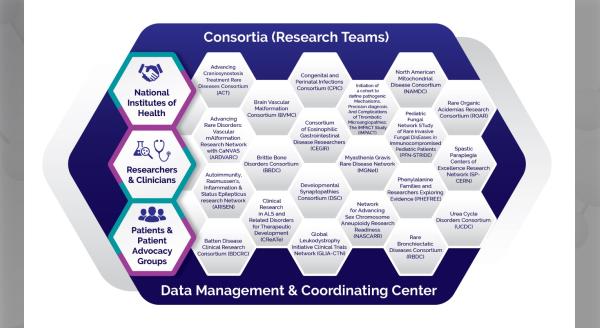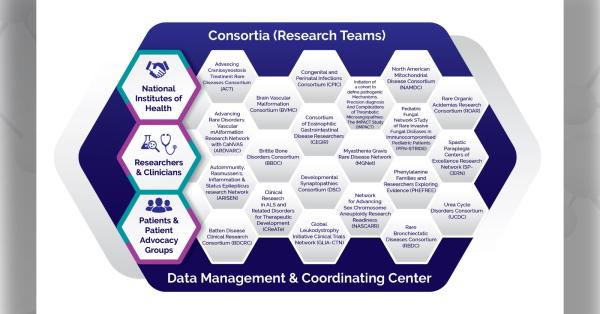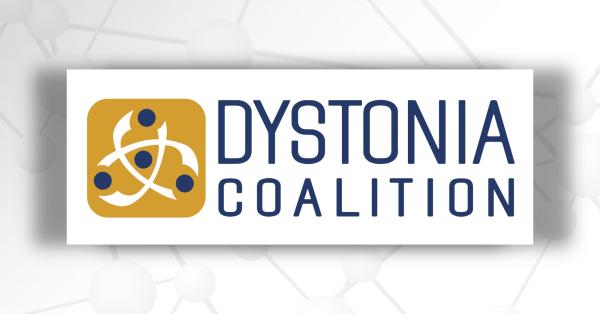The Global Leukodystrophy Initiative Clinical Trials Network (GLIA-CTN) is a consortium of scientists, clinicians, industry stakeholders, and patient advocacy leaders working together to promote advances in the diagnosis and treatment of leukodystrophies—a group of rare, primarily inherited neurological disorders. Here, program manager Omar Sherbini, MPH, shares the history of the consortium, current research, and future plans.
What are the overall goals of the GLIA-CTN?
We seek to create a robust research infrastructure that will allow for collection and analysis of longitudinal natural history data, development of novel clinical outcome assessments, and identification of surrogate biomarkers—ultimately paving the way for transformative therapeutic trials across the leukodystrophies.
In parallel to these approaches, the GLIA-CTN works closely with a diverse group of stakeholders to promote disease awareness and education, advocate for the adoption of universal newborn screening and early diagnostic programs and establish clinical guidelines to support the short- and long-term care of individuals living with leukodystrophies.
How did the GLIA-CTN team come together, and how did you become a part of the RDCRN?
The GLIA-CTN was born out of a longstanding collaborative effort to bring together clinicians, researchers, advocacy leaders, industry leaders, and regulatory authorities with common interests in advancing diagnostic capacity and efficacy, refining disease management strategies, and accelerating development of the next generation of clinical trials and, eventually, approved therapies for individuals living with leukodystrophies.
This multidisciplinary collaborative began operating informally under the GLIA name in January 2013, launching a series of working groups, natural history projects, and scientific conferences over the subsequent years. Eventually, it became apparent that a more formal infrastructure was needed to support research activities within this network of scientific collaborators—not only to standardize data collection and analysis approaches, but also to expand budding efforts to identify novel biomarkers, launch multi-center clinical trials, and work with regulatory agencies to seek approval for therapies in these disorders.
In September 2019, Drs. Adeline Vanderver, MD (Children’s Hospital of Philadelphia), Ali Fatemi, MD, MBA (Kennedy Krieger Institute), and Florian Eichler, MD (Massachusetts General Hospital), were named as co-principal investigators on an RDCRN grant funded as a collaboration between the National Center for Advancing Translational Sciences (NCATS) and the National Institute of Neurological Disorders and Stroke (NINDS). The award included support for investigators at several other key established leukodystrophy research institutions—Baylor College of Medicine (Lisa Emrick, MD, BA), Emory University (Stephanie Keller, MD), Children’s National Hospital (Jamie Fraser, MD, PhD), Stanford University (Keith van Haren, MD), University of Utah (Josh Bonkowsky, MD, PhD), and University of Wisconsin (Albee Messing, VMD, PhD)—most of whom had been involved since the early days of GLIA. In recognition of the overarching goal to accelerate development of advanced therapeutics in the leukodystrophies, the group began operating under the GLIA-CTN name.
Can you tell us more about the rare diseases you study?
Leukodystrophy refers to genetic diseases that predominantly affect the white matter of the central nervous system (CNS). White matter is tissue made up of bundles of nerve fibers (axons) that connect nerve cells. These fibers are wrapped by an insulating sheath called myelin which provides nutritional support to nerve cells and helps speed up signals between them, allowing them to send and receive messages quickly.
Leukodystrophy is not a single disorder. It is a group of rare, primarily inherited neurological disorders known as the leukodystrophies that result from the abnormal production, processing, or development of myelin and other components of CNS white matter, such as cells called oligodendrocytes and astrocytes. Oligodendrocytes and astrocytes belong to a group of cells called glial cells which surround, support, and insulate nerve cells.
Leukodystrophies are usually progressive, meaning they get worse as time goes on. Some forms are present at birth, while others may present either during infancy, childhood, or adolescence. Some of the leukodystrophies can also present during adulthood.
What are your current research projects?
The GLIA-CTN, currently in its first funding cycle, has focused on four well-defined projects designed to develop tools and systems to meet the needs of future clinical trials in the leukodystrophies.
Project 1: Longitudinal Natural History Study of Leukodystrophies
This project will advance the clinical trial readiness for multiple leukodystrophies by creating an outcomes assessment “toolbox” and multi-center data integration systems. Further, this project will catalyze ongoing efforts within the leukodystrophy community by bringing together dozens of patient advocacy groups, industry stakeholders, and existing research consortia. Specifically, Project 1 will focus on the following five disorders that have either ongoing newborn screening programs or are considered to be at a state of clinical trial readiness:
- Aicardi-Goutières syndrome
- Adrenomyeloneuropathy
- Alexander disease
- Metachromatic leukodystrophy
- Pelizaeus-Merzbacher disease
This selection is further justified by preliminary epidemiological data suggesting that these five conditions alone account for nearly 40% of all individuals diagnosed with a leukodystrophy. That said, the knowledge and tools developed through this project will be applicable to all other leukodystrophies and even other rare disorders causing similar clinical manifestations.
Project 2: Adrenomyeloneuropathy - A Novel Disease Rating Scale and Innovative Measures of Balance
X-linked adrenoleukodystrophy (ALD), a debilitating neurological disorder caused by mutations in the ABCD1 gene, is one of the few leukodystrophies for which newborn screening is available and recommended by the federal government. Adult-onset adrenomyeloneuropathy (AMN) is the most common form of ALD, affecting nearly all adult males and more than half of adult females. Despite advances in treatment for the childhood onset cerebral form of ALD, no treatment is currently available for AMN. Additionally, the slow and variable rate of disease progression and lack of understanding of clinical outcome assessments (COA) have hampered efforts to design clinical trial readiness.
In this project, investigators will explore novel disease rating scales and measures of ataxia, a key component of the gait abnormalities seen in AMN. The results of this project will be vital for the facilitation of clinical studies for therapies that are currently under development for adults with AMN.
Project 3: Alexander Disease – Establishing Evidentiary Criteria Around a Key Biomarker (GFAP)
Alexander disease (AxD) is a neurodegenerative disorder caused by the accumulation of a cellular protein known as glial fibrillary acidic protein (GFAP) in brain astrocytes. Exciting novel studies in animal models have demonstrated the ability to decrease abnormal GFAP using antisense oligonucleotide (ASO) technology. These advances offer tremendous hope for this devastating disease, leading families, advocacy groups, clinicians, and researchers to seek prompt initiation of clinical trials.
However, translating these findings into effective treatments is limited by the lack of data qualifying GFAP as a responsive biomarker for such a clinical trial. Project 3 therefore aims to address the internal validity of multicenter GFAP testing methodologies, including intra-assay and inter-assay precision and accuracy, and advance our understanding of variability in GFAP levels by clinical disease subtypes. This project also seeks to examine the relationships between clinical subtypes, GFAP levels, and clinical outcome assessments.
Project 4: Aicardi-Goutières Syndrome - Subtype Classification, Clinical Outcome Assessments, and Biomarkers
Aicardi-Goutières syndrome (AGS) is a rare genetic disorder of excessive production of interferon (IFN), an important inflammatory protein, resulting in severe, systemic inflammation-induced injury and potentially profound disabilities. Most individuals affected by AGS exhibit some degree of neurologic impairment, ranging from mild spastic gait disorder—referred to as paraparesis—to severe global developmental delay. Additionally, excessive interferon production results in systemic manifestations and recurrent fevers with severe, chronic irritability. AGS therapeutic trials are limited by heterogeneous patient populations and the lack of disease-specific outcome measures. Recent clinical studies have demonstrated that current outcome assessment tools do not adequately capture the impact of the disease and the subsequent improvement.
In this project, we will begin to bridge those gaps by identifying clinically distinct subgroups of AGS, designing an AGS-specific clinical rating scale, and exploring the relationship of a novel biomarker to clinical disease.
How has your research impacted patients?
The GLIA-CTN’s goal is to establish a multi-center research infrastructure that can be used to launch clinical trials more efficiently, quickly, and safely. Clinical outcome assessments and biomarkers developed and validated as part of our current research projects are already being used to support ongoing clinical trials in adrenomyeloneuropathy (AMN), Aicardi-Goutières syndrome (AGS), and Alexander disease, along with other leukodystrophies. We anticipate that the natural history components of our projects will catalyze the development of first-in-human clinical trials for other leukodystrophies and provide key information about disease onset, manifestation, and trajectory that can be used to inform the guidance patients and families receive in the clinical setting.
Finally, because the GLIA-CTN collaborates actively with more than 50 patient advocacy organizations representing approximately 20 leukodystrophies, patients have the ability to become directly engaged with, influence, and support the future of leukodystrophy research.
What new research directions or goals are you pursuing?
Our investigators, research staff, and technical analysts are actively exploring novel tools—such as the use of “big data” derived securely from the electronic health record (EHR), or the use of remote clinical outcome assessments (COAs) and/or patient-reported outcomes (PROs) for individuals who may not be able to visit research sites—with the hope that these strategies will streamline our overall research approach and pave the way for research studies that are more accessible, diverse, and inclusive.
In addition to this, the GLIA-CTN Advocacy Committee has provided a neutral space for advocacy leaders from across the leukodystrophy community to come together, learn, and plan key initiatives, such as Externally-Led Patient Focused Drug Development (EL-PFDD) meetings with the Food and Drug Administration (FDA), creation of tools to optimize the use of patient registries, etc.
How has being part of the RDCRN impacted the GLIA-CTN’s work?
Participation in the network has been pivotal for our work. The Data Management and Coordinating Center (DMCC) has worked closely with the GLIA-CTN Data Integration Core (DIC) to develop data management tools, standards, and quality assurance practices that would have otherwise been out of reach. Moreover, the GLIA-CTN External Advisory Committee (EAC)—which includes experienced leaders from other consortia participating in the RDCRN—has provided continued oversight and recommendations based on their experience, with a significant impact on the refinement of own strategies over the course of the current award period.
Finally, the GLIA-CTN Advocacy Committee has engaged regularly with the RDCRN Coalition of Patient Advocacy Groups (CPAG) to learn from experienced advocacy leaders in other rare disease communities who have faced—and successfully solved—pressing challenges similar to those currently relevant to the leukodystrophy community.
How do you envision that the diseases you study can ultimately be cured?
With expanded access to next-generation sequencing approaches—such as whole exome or whole genome sequencing—a greater number of individuals than ever before are receiving a timely and accurate diagnosis, allowing clinicians and researchers to begin exploring therapeutic interventions that may be currently available or anticipated in the future. Because leukodystrophies are so heterogeneous in their causes, symptoms, etc., it is likely that effective therapies will require different strategies ranging from gene therapy, antisense oligonucleotide (ASO) approaches, enzyme replacement therapies, and development of small molecule therapeutics.
The Global Leukodystrophy Initiative Clinical Trials Network (GLIA-CTN) is part of the Rare Diseases Clinical Research Network (RDCRN), which is funded by the National Institutes of Health (NIH) and led by the National Center for Advancing Translational Sciences (NCATS) through its Division of Rare Diseases Research Innovation (DRDRI). GLIA-CTN is funded under grant number U54NS115052 as a collaboration between NCATS and the National Institute of Neurological Disorders and Stroke (NINDS).








